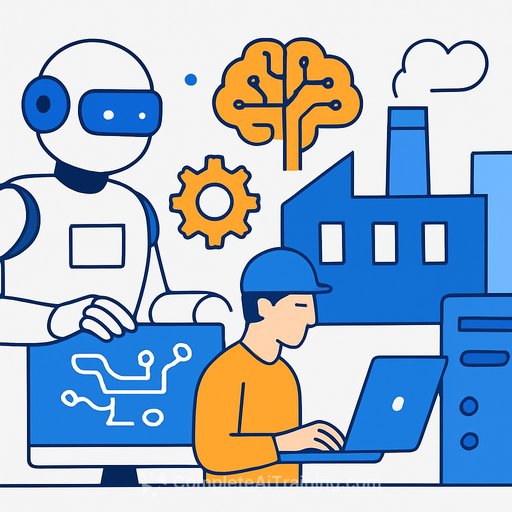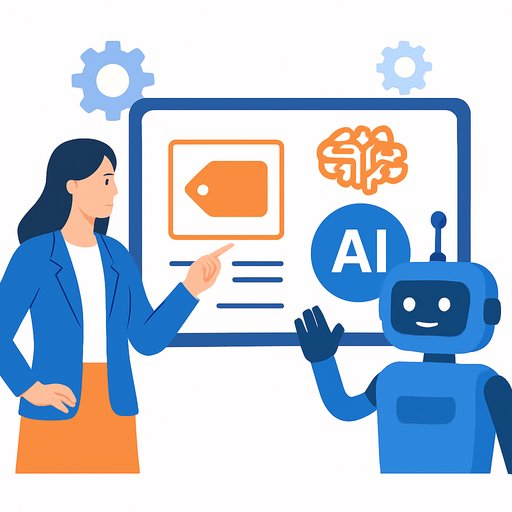AI factories move from hype to hard ROI
Enterprises are shifting from proofs to production. The focus now: on-premise AI factories that generate tokens at scale, run advanced agents, and keep sensitive data on home turf.
In a conversation on theCUBE, H2O.ai's Sri Ambati and Dell Technologies' Satish Iyer outlined how sovereign infrastructure and domain-specific agents are becoming the default path for real outcomes - especially in regulated industries.
Why AI should run where your data lives
Most enterprise data is on-prem. Moving it to the public cloud for every prompt isn't practical, cost-efficient, or compliant. That's the point of AI factories - bring large and small models to the data, not the other way around.
Ambati highlighted the need for air-gapped options so regulated teams can deploy advanced models without sending prompts or context outside company walls. Dell and H2O.ai are partnering to deliver that model: on-prem stacks that support both private and public data while keeping sensitive workloads contained.
What an AI factory includes
- GPU-optimized compute sized for both training and high-throughput inference
- High-performance storage next to your core datasets
- LLMOps for model cataloging, retrieval, evaluation, and deployment
- Security controls with optional air-gap and strict network boundaries (what an air gap is)
- Observability for cost, latency, failure modes, and model quality
Sovereign AI is becoming table stakes
Iyer noted that Dell now counts more than 3,000 AI factory customers, with strong adoption across finance, government, healthcare, and telecom. These teams want local control, predictable costs, and zero exposure of sensitive data to shared infrastructure.
Practically speaking, that means running a mix of large models, small language models, and vertical stacks - all within your compliance boundary.
Specialized agents beat general-purpose chat
The big win isn't a single model that does everything. It's specialized agents that do one job well inside a domain - underwriting, claims triage, network ops, clinical documentation, risk review, and more.
H2O.ai's approach reflects this shift. Their Superagent converts business tasks into executable steps and code, reducing hallucinations and making results repeatable. The goal: clean handoffs into existing systems and measurable productivity gains.
Enterprise playbook: 90-day starter plan
- Pick one high-friction workflow: e.g., policy review, SOC alert triage, invoice reconciliation, or patient intake summaries.
- Stand up a small AI factory cell: 1-2 GPU nodes, vector store, retrieval pipeline, evaluation harness, and basic guardrails.
- Start with a small model + retrieval: Use domain documents and structured data. Keep context windows tight and prompts deterministic.
- Wrap with an agent: Define tools (search, database read/write, ticketing, email) and permissions. Force every action to be logged.
- Prove value in production: Run side-by-side with humans. Track precision, task completion time, exception rate, and rework.
KPIs that actually matter
- Cycle time: Minutes saved per task and percentage of tasks auto-completed
- Quality: Hallucination rate, escalation rate, and user satisfaction
- Cost: Cost per task vs. baseline and cloud egress avoided
- Safety: Policy violations, data leakage incidents, and tool misuse
Guardrails you should not skip
- Evaluation by design: Golden datasets, prompt tests, and regression checks before every change
- Least-privilege tooling: Agents see only what they need; every tool call is auditable
- Grounding and verification: Retrieval first, citation required, and automated fact checks for critical actions
- Human-in-the-loop: Required approvals for irreversible or high-risk steps
What this means for your team
- Executives: Fund focused use cases, not vague platforms. Ask for 90-day proofs with measurable ROI.
- IT and Engineering: Build a repeatable agent stack: retrieval, tools, orchestration, and observability. Keep it modular.
- Data and Risk: Classify data early, write usage policies, and enforce them with technical controls.
Bottom line
AI factories let you run advanced agents next to your data, under your rules, and with outcomes you can measure. The winners won't be those with the biggest model, but those with the clearest workflows and the most trustworthy agents.
Want to skill up your team on automation and agent workflows? Explore structured paths here: AI Automation Certification.
Your membership also unlocks:










